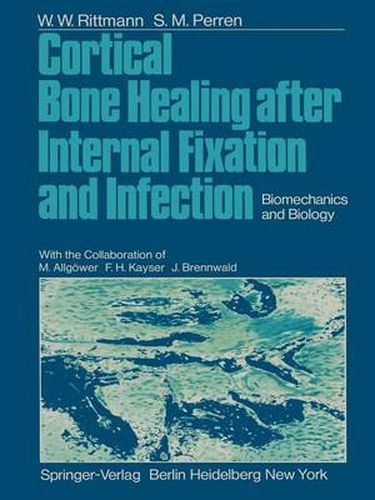Readings Newsletter
Become a Readings Member to make your shopping experience even easier.
Sign in or sign up for free!
You’re not far away from qualifying for FREE standard shipping within Australia
You’ve qualified for FREE standard shipping within Australia
The cart is loading…






This title is printed to order. This book may have been self-published. If so, we cannot guarantee the quality of the content. In the main most books will have gone through the editing process however some may not. We therefore suggest that you be aware of this before ordering this book. If in doubt check either the author or publisher’s details as we are unable to accept any returns unless they are faulty. Please contact us if you have any questions.
The danger of infection remains the most serious drawback to internal fixation. Prevention, using all available prophylactic measures should be the central feature in every surgical department. Though the infection rate may remain below the acceptable level of 2 %, the infected patient derives little comfort from the large number of excellent results in other people. We must discover the best way to offer these patients a favourable prognosis. This should not be based on intuition but on clear proven guiding principles. Planning the treatment for a patient whose internal fixation has become septic must decide between steps which may have advantages or disadvan tages. The disadvantage of the presence of a foreign body must be weighed against the advantage of rigidity. The authors have taken up this challenge by planned animal experiments to study the healing of internally fixed fractures which have been infected with staphylococci. They have shown that under stable conditions, even massive infection did not destroy the healing process in cortical bone. Even under these circumstances fracture union, in the form of primary bone healing, can occur even if with less regularity than in unin fected internal fixation.
$9.00 standard shipping within Australia
FREE standard shipping within Australia for orders over $100.00
Express & International shipping calculated at checkout
This title is printed to order. This book may have been self-published. If so, we cannot guarantee the quality of the content. In the main most books will have gone through the editing process however some may not. We therefore suggest that you be aware of this before ordering this book. If in doubt check either the author or publisher’s details as we are unable to accept any returns unless they are faulty. Please contact us if you have any questions.
The danger of infection remains the most serious drawback to internal fixation. Prevention, using all available prophylactic measures should be the central feature in every surgical department. Though the infection rate may remain below the acceptable level of 2 %, the infected patient derives little comfort from the large number of excellent results in other people. We must discover the best way to offer these patients a favourable prognosis. This should not be based on intuition but on clear proven guiding principles. Planning the treatment for a patient whose internal fixation has become septic must decide between steps which may have advantages or disadvan tages. The disadvantage of the presence of a foreign body must be weighed against the advantage of rigidity. The authors have taken up this challenge by planned animal experiments to study the healing of internally fixed fractures which have been infected with staphylococci. They have shown that under stable conditions, even massive infection did not destroy the healing process in cortical bone. Even under these circumstances fracture union, in the form of primary bone healing, can occur even if with less regularity than in unin fected internal fixation.